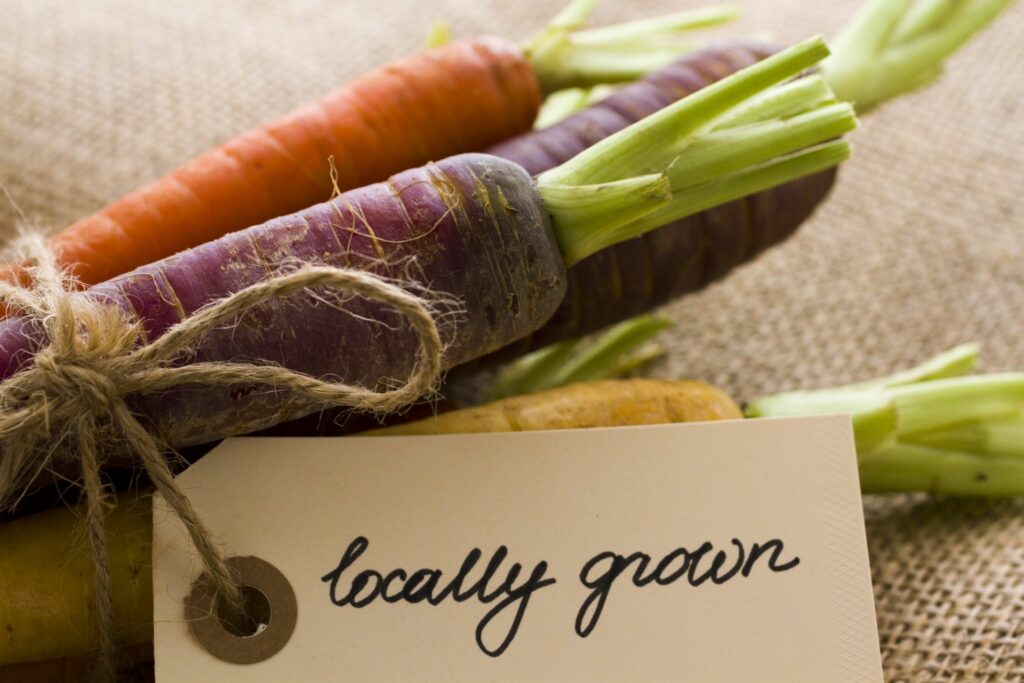Have you noticed that carrots are hot, hot, hot? How is it that this meager root vegetable, hardly one people would push off their plates nor make a fuss over, has become the darling of oh so many chefs and foodies? What happened?
Well, who’s to say for sure but I do remember Rene Redzepi of Noma talking about how amazing a simple carrot could be when grown in the right way. Can’t tell you what interview I was watching but Redzepi’s passion about the potential of a well-grown carrot, well, that stuck with me and the next time I saw carrots on the menu, I ordered them off the antipasti menu and was pleasantly surprised at how good they were roasted with a bit of olive oil, served room temperature alongside some homemade burrata.
Then, there’s the Slow Food Movement which, of course, champions locally grown produce. Hence, chefs who source locally have turned to the hearty carrot and found something worthwhile in its dense texture, crunch, sweetness and versatility. This last attribute is one chef Troy Guard chef/owner of TAG in Denver makes the most of with his “Carrot Taco” made of a carrot tortilla, a filling of braised carrots, salad of cilantro and raw carrots and a dab of guacamole.[1] Go to any respectable farmer’s market and you’ll see an array of multicolored, green-topped carrots. They’re downright dazzling to behold. It’s easy to see, once plated, how these root vegetables could really appeal to the eater’s aesthetic sensibilities. Then, of course, none of it matters if they don’t deliver with flavor and to get to the bottom of this, you have to look back to the soil.
When I ask Chef Martin Gilligan to speak about the carrot and growing practices, he mentions a conversation he had some twenty years ago with Chef Michel Pieton while serving as his apprentice (extern). One day, chopping carrots across from one another, Pieton started telling Gilligan about how much better the carrots were when he was growing up in Périgueux, France. Back in his day, “When you had a carrot in your mouth, you really knew you had a carrot in your mouth.” The mentor chef Pieton told Gilligan “what a shame it was that now because of the fact that we are adding things to the soil; pesticides, lack of organics, and things like that that which were happening in order to be able to produce more carrots in a certain field of growth; that carrots have lost some of their grandiosity, their expertise, their impact in a certain dish.”
Mind you, the carrot has never been totally cast off, as was the case with the brussel sprout until a mere two years ago when they started popping up deep fried with balsamic, made into slaw and skewered between bits of lamb. A longstanding member of the classic mirepoix, a trifecta of onion, celery and carrot, the vegetable has never been completely off the stage. In the case of the carrot, what has probably happened is chefs rediscovered the carrot as a key ingredient just as more high-quality, organic carrots were appearing at market. Better growing practices yielded a better quality product with a greater range of flavor which, when conscientiously prepared, could yield remarkable flavor. In this day of return to our roots, bio-friendly behavior, the humble carrot is a perfect champion of such beliefs. Moreover, its humble, everyday origin makes the chef look all the better for taking such an ordinary vegetable and unleashing its potential.
But is this fair? Not really. A better carrot will yield a better dish. One with more crunch and a greater molecular density with be more versatile than a carrot that’s grown in a in a “mass production style” where it’s all about output, not taste nor nutritional quality. What we’re seeing today is perhaps nothing more than a return to farm to table buying practices compounded with good ol’ supply and demand. As more high-quality carrots come to market, chefs and cooks everywhere are discovering the carrot in heirloom varieties, raised by small farmers who have cultivated purple carrots, Nantes carrots, Danvers and a slew of other varieties. With better product, there’s more to do. Thanks to this, we’re in the midst of a full-on carrot renaissance. So sure, serve them as Chef Ken Oringer does, cooked in goat butter and topped in hay that is then set ablaze; serve them salt-roasted and dressed with a Burgundy mustard vinaigrette the way Jeff Mahin does in Santa Monica, CA[2]; prepare them in a Thai Curry-Carrot Soup with Maine lobster and coconut tapioca like Test Kitchen Los Angeles, the possibilities are endless!
Want to take a stab growing them yourself? Well, if you’re in the East Coast, you’ve actually got great carrot-growing soil.
Chef Martin Gilligan says where he grew up on the east end of Long Island made for really great carrot-growing. He explains saying, “Long Island was actually created by a receding glacier, and it’s all sand, really sandy soil. You can dig down at any point on Long Island, 10 or 15 feet, and hit water. That’s the type of soil that is really amazing for carrots.” West Coasters and Midwesterners do not despair, great carrots can be grown anywhere, just plan on preparing the right, sandy soil and get a variety that will work best for your region.
[1] New York Times. October 29, 2012. https://www.nytimes.com/2012/10/31/dining/carrots-gain-bigger-roles-at-some-restaurants.html?_r=0





